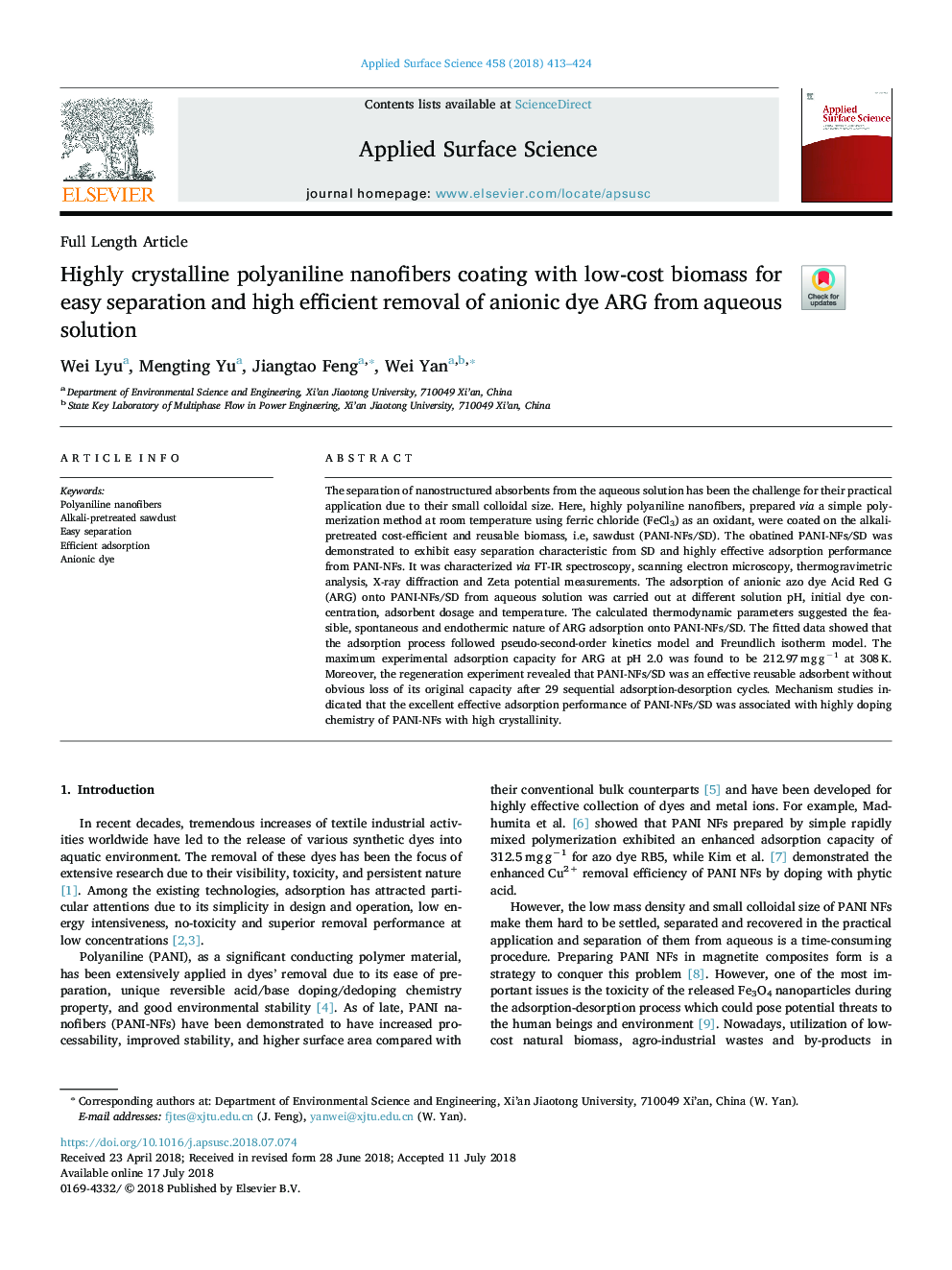| Article ID | Journal | Published Year | Pages | File Type |
|---|---|---|---|---|
| 7832879 | Applied Surface Science | 2018 | 12 Pages |
Abstract
The separation of nanostructured absorbents from the aqueous solution has been the challenge for their practical application due to their small colloidal size. Here, highly polyaniline nanofibers, prepared via a simple polymerization method at room temperature using ferric chloride (FeCl3) as an oxidant, were coated on the alkali-pretreated cost-efficient and reusable biomass, i.e, sawdust (PANI-NFs/SD). The obatined PANI-NFs/SD was demonstrated to exhibit easy separation characteristic from SD and highly effective adsorption performance from PANI-NFs. It was characterized via FT-IR spectroscopy, scanning electron microscopy, thermogravimetric analysis, X-ray diffraction and Zeta potential measurements. The adsorption of anionic azo dye Acid Red G (ARG) onto PANI-NFs/SD from aqueous solution was carried out at different solution pH, initial dye concentration, adsorbent dosage and temperature. The calculated thermodynamic parameters suggested the feasible, spontaneous and endothermic nature of ARG adsorption onto PANI-NFs/SD. The fitted data showed that the adsorption process followed pseudo-second-order kinetics model and Freundlich isotherm model. The maximum experimental adsorption capacity for ARG at pH 2.0 was found to be 212.97â¯mgâ¯gâ1 at 308â¯K. Moreover, the regeneration experiment revealed that PANI-NFs/SD was an effective reusable adsorbent without obvious loss of its original capacity after 29 sequential adsorption-desorption cycles. Mechanism studies indicated that the excellent effective adsorption performance of PANI-NFs/SD was associated with highly doping chemistry of PANI-NFs with high crystallinity.
Related Topics
Physical Sciences and Engineering
Chemistry
Physical and Theoretical Chemistry
Authors
Wei Lyu, Mengting Yu, Jiangtao Feng, Wei Yan,
